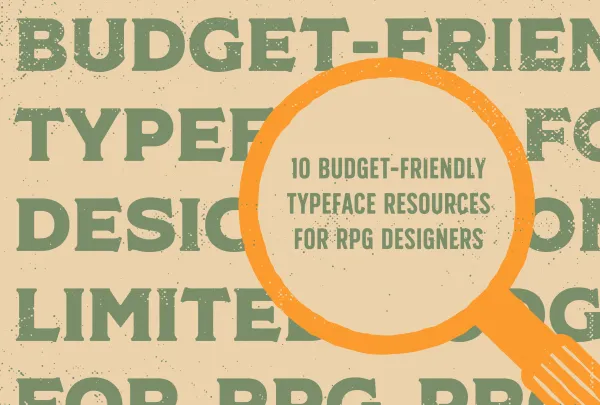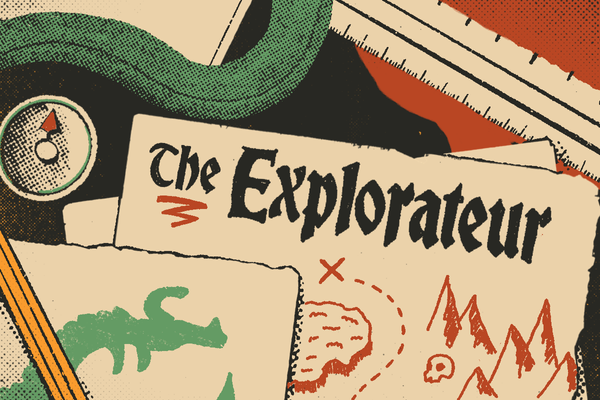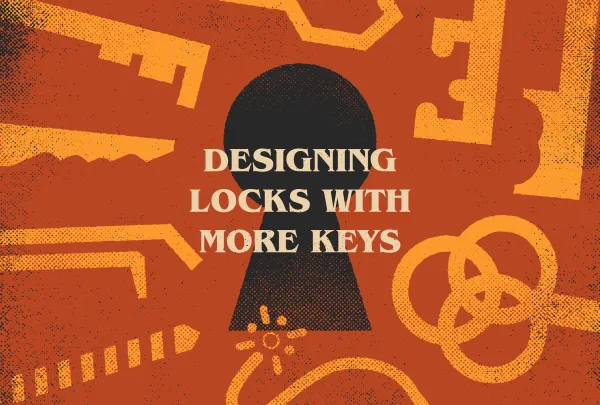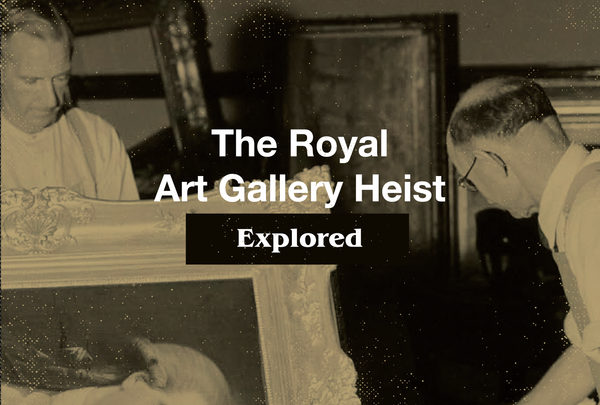General Design 101: The Explorers' Method
How to design games and everything else with the Explorers Design five-step method.
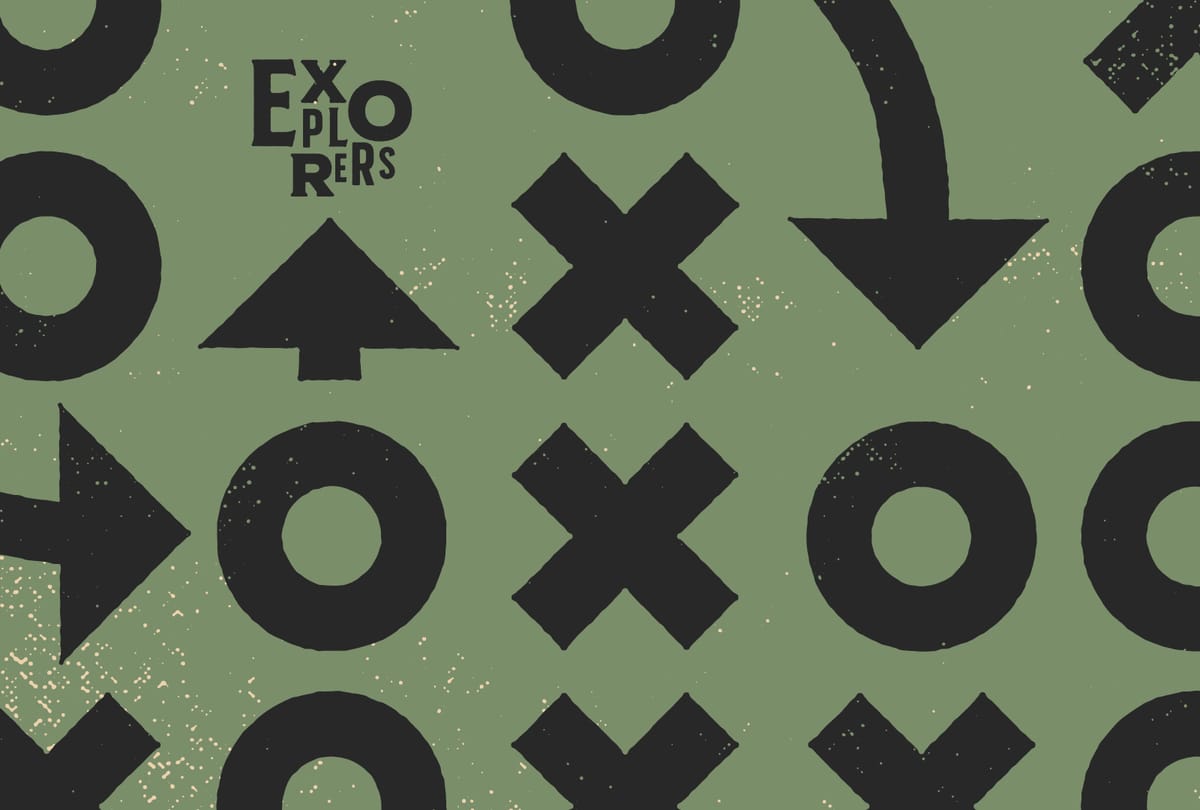
First, there are many kinds of design and therefore many ways to design. Let's not tangle with that. Instead, let's focus on designing, and wrestle with something much harder—what makes a design feel good? Design is subjective. There are objective metrics, but the thing that makes design good or transcendent—makes it art—is subjective.
Subjective but not arbitrary.
Design is a practice about intention. It can be a book cover, a logo, or a game system. Either way, the designer designs by making decisions. They navigate, problem-solve, and explore ways to execute an idea, concept, or goal. This can be small, like deciding the size of your type, picking a color scheme, or deciding whether to notate the six-sided die d6 or 1d6. It can also be big, like choosing the overall art direction, crafting a voice and tone, or picking a game system.
In the end, all of these decisions are relative. Any decision could be good until we judge it within its context. For the designer, that context is their intention. What do they want the design to do, say, and become?
1. Find your creative concept.
2. Collect and combine inspiration.
3. Test your work by asking "why?"
4. Balance the order and chaos.
5. Rinse and repeat.
Step 1: Find your creative concept.
If you're working for someone else, you'll have a creative brief, a short document outlining the project's goals, details, and strategy. If you're working for yourself, you'll need something else.
You need a "creative concept." The core idea, mood, or theme that guides your decisions. It can assume any shape or form. It can be a personal creative brief, a paragraph, or even a short and evocative sentence. I think you should do a mixture of all three. The sentence is useful because it forces us to articulate the idea in an actionable way. Do not skip this step.
Examples of creative concepts:
- Mausritter but with knights, lands, and holdings like Pendragon.
- A roleplaying game of noir detectives in the style of Raymond Chandler.
- A game about wizards who cast spells with their pecs instead of their brains.
- High-fantasy rpg. Satirical, industrial, gonzo. For fans of Terry Pratchett.
For the rest of this article, let's assume that we're making a game about noir detectives in the style of Raymond Chandler's The Big Sleep, Chinatown, or less-expectedly, The Big Lebowski. This gives us expectations, goals, and maxims to steer our design with.
How do we proceed from here? How do we narrow down the millions of colors, fonts, mechanics, art styles, and print options?
Step 2: Collect and combine inspiration.
There's no such thing as new. At least, no such thing as 100% new. If something looks like it spontaneously appeared, it's because the things that inspired it are either incredibly unexpected or obscure.
All artists steal. The secret to being a good designer is looting from interesting sources. Originality comes from what you steal and how you choose to use them.
When looking for inspiration to implement in your designs, consider two factors.
Context. Everything has a pre-existing relationship with history, society, and culture. When we deploy things like fonts, colors, and rules, we tug at the memory, reputation, and connections they have.
- We could create a black-and-white color scheme to "borrow" the familiarity from old noir films like The Thin Man, Breaking Point, or the Maltese Falcon.
- The game could be printed on cheap pulp paper like the original detective magazines from the 1930s like Black Mask or Detective Magazine.
- The rules could employ playing cards and poker chips to evoke the look and feel of a seedy gambling den or a high-stakes game of bluffs and wagers.
Function. Sometimes elements are designed with an original function in mind. A function that might be relevant or beneficial to your project. Often, as designers, we have to navigate a middle ground between context and function.
- Early pulp novels were pocket-sized so readers could carry them on the job. Maybe that functional benefit is useful to us for convention games?
- Cheap pulp paper isn't just nostalgic, it's also cost-effective. We might decide to pick it for printing to save cash for editors and guest writers.
- We might decide cards and poker chips aren't feasible and choose six-sided dice instead. The context is similar but the functionality is different.
Step 3: Test your work by asking "why?"
Every time you make a decision, like picking a font or combining two colors. Ask yourself why. Then ask it again. Good designers have an answer for both. The answer can be inscrutable. Something like, "Because it looks cool." But most designers dig deeper.
Have an answer that can be tied back to your project's big idea, brief, or plan—and defend it with context and function.
- Why do I use a lot of metaphors in my noir game? Because my inspiration, pulp writers, use metaphors. Why? Because it's evocative, direct, and appeals to a wide range of readers (and skill levels).
- Why don't I hire more artists? Because more artists will make the game look less unified. Why? Because I don't have the time and budget to hire high-quality artists with a similar style. (Sometimes answers can be pragmatic. Design considers economics, limitations, and usage in addition to creativity.)
- Why do I not use STR, DEX, and CON in this detective game? Because those stats found in other RPGs are irrelevant in detective novels. Why? Because most noir detectives scrape by on their principles, guts, and luck. Outstanding strength, dexterity, and constitution never make an appearance.
Step 4: Balance the order and chaos.
Get ready for some theory. Every decision contributes to the project's overall composition. Those decisions will do one of two things. They'll either add a sense of order, harmony, and affinity or create chaos, tension, and contrast.
Order. Decisions that create harmony, complement other elements, or create comfort in the audience are considered orderly, complimentary, or compounding decisions. These decisions anchor the audience, play into expectations, create familiarity, and suggest predictability or reliability.
- Using the same font for a noir detective game as noir movies and video games.
- Creating a layout with a lot of repetition, patterns, and regular art placements.
- Using rules that are used in other mystery games with minimal modifications.
Chaos. Decisions that create surprise, contrast with other elements, or create tension in the audience are considered chaotic or destabilizing decisions. These decisions challenge the audience, keep them guessing, and trigger them to reinterpret or reconsider what they know.
- Using an unexpected color like bright yellow or pink to stand out from the pack.
- Creating a layout with deconstructed or "chaotic" spreads to surprise readers.
- Creating rules for something unexpected, like the detective's hat or hip flask.
Every game performs a balancing act between these two poles. Your creative concept decides which side the fulcrum is on, and the elements you collect and combine change the scales. Always consider this balance when asking why. Great games oscillate between chaos and order exactly when they need to.
In general, order makes your design approachable and chaos makes it fresh—but don't rely on this generalization. Orderly, almost sterile, designs can be radical in the right context. And chaotic design decisions can feel familiar in certain communities. That's why the designer is the secret ingredient to good work.
Step 5: Rinse and repeat.
Design is about exploring. You'll hit dead ends, fall into traps, and have to problem-solve your way out. There will be the occasional bugbear or dragon you'll have to slay—like a paragraph that won't fit or a snafu at the printers.
My biggest piece of advice is to condense this process into small pieces. Do not design your game, cover, or layout in one go. Break the project into pieces, take breaks, and return to them. If you're making a game, design what you need to playtest and go no further. Use this process to tackle and solve "the dungeon" one room at a time. The sooner you can get to step 5, step back, and restart, the sooner you'll get to the treasure at the end of your design adventure.
Before I close out, here are a few last thoughts...
- Steal from weird places. Don't use RPGs for inspiration. Go to a gallery, read hardware manuals, play a board game, book the museum tour, and take a long hike. Loot from the places no one else would think to loot.
- Consider the forbidden places. Use hot pink in your death metal game, make an adventure without any art, and make your D&D heartbreaker combat-free. Sometimes the road that's never traveled should be.
- Ask for reactions, not solutions. Eventually, you'll want to share your work. Ask them for their feelings. How do they feel about a spread, a rule, or use of colors? The way our audience feels is rarely ever wrong—but their solutions and targeted feedback often are. You're the explorer. Not them.
- Rules are relative. There's usually a path forward that doesn't require abandoning your creative concept or a design's usability. Avoid dogmatic people who insist on "the true way." Your way will be different.
- No design is for everyone. Nothing is universal. Any decisions you make to incorporate some will alienate others. Aim for an audience. Do the best you can with accessibility. Try your best. Don't beat yourself up about things outside of your control or the haters who'll always hate.
- Design for yourself. Make what you love. Enjoy the journey. Never stop exploring.
Explorers Design is a production of Clayton Notestine. If you liked this article, please consider liking, sharing, and subscribing. Members who pay just $5/month also get unlimited access to templates, tools, and resources.


